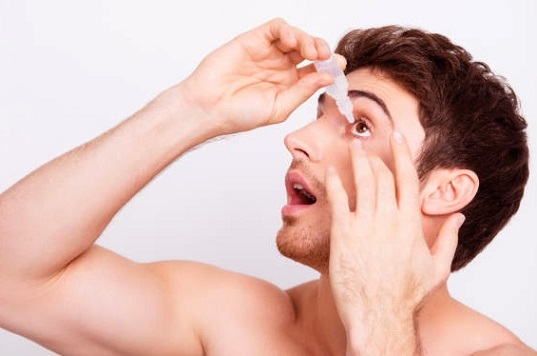Nikhil Prasad Fact checked by:Thailand Medical News Team Jan 17, 2025 3 months, 1 day, 1 hour, 25 minutes ago
Medical News: Dry eye disease (DED), a condition affecting millions globally, is one of the most commonly diagnosed eye disorders, with a prevalence ranging from 5% to 50% depending on geographic location and population demographics. DED is more than just a minor inconvenience; it is a complex disorder of the tear film and ocular surface. Symptoms include persistent dryness, irritation, a gritty sensation, and even visual disturbances. Over time, the condition can lead to inflammation and damage to the delicate ocular surface, significantly impairing a person’s quality of life. Recent advancements in understanding DED have highlighted its multifactorial nature, influenced by environmental factors, underlying health conditions, and lifestyle choices. With this in mind, effective management of the disease remains a critical focus for researchers and clinicians.
 The Role of Glycerol in Ophthalmic Care
The Role of Glycerol in Ophthalmic Care
Glycerol, a naturally occurring compound with humectant and osmoprotective properties, has garnered increasing attention as a therapeutic agent in managing DED. Traditionally, artificial tears and anti-inflammatory medications have been the mainstays of treatment. However, these solutions often provide temporary relief and can carry risks of side effects. This
Medical News report explores the emerging evidence supporting glycerol’s use as a promising alternative.
Glycerol is a three-carbon alcohol that acts as a humectant, attracting and retaining moisture. It has been widely used in skincare products and pharmaceutical formulations for its non-toxic and soothing properties. As part of artificial tear solutions, glycerol’s unique characteristics make it particularly effective in addressing the key pathophysiological factors of DED. These include tear film instability, hyperosmolarity, and inflammation, which often lead to the chronic cycle of discomfort experienced by patients.
Mechanisms of Action
The efficacy of glycerol in managing DED lies in its multifunctional properties. It is a powerful humectant that draws water into the tear film, alleviating dryness and providing immediate relief to the ocular surface. Its osmoprotective capabilities further protect cells from dehydration and osmotic stress, a common issue in patients with DED. Additionally, glycerol has shown potential in stabilizing the tear film by increasing its viscosity, reducing tear evaporation, and prolonging comfort between blinks.
Another notable benefit of glycerol is its role in reducing ocular surface inflammation. Inflammation is a core mechanism of DED, often exacerbated by hyperosmolarity and oxidative stress. Glycerol’s ability to counteract these effects makes it an invaluable addition to treatment regimens.
Clinical Evidence Supporting Glycerol’s Use
Multiple studies have explored the benefits of glycerol-based artificial tears in alleviating DED symptoms. One clinical trial demonstrated that patients using glycerol-containing eye drops experienced significant improvement in tear break-up time (TBUT), a critical measure of tear film stability. Compared to other formulations, glycerol-based solutions provided fast
er symptom relief and better patient satisfaction.
In preclinical models, glycerol has been shown to enhance the delivery of active ingredients to the anterior segment of the eye. For instance, studies using glycerol-based microemulsions have reported improved tear production and reduced ocular surface damage in animal models. These findings underscore glycerol’s potential not only as a standalone therapy but also as a vehicle for delivering other therapeutic agents.
Safety and Tolerability
Long-term studies have affirmed the safety and tolerability of glycerol-based treatments. Patients with sensitive eyes, who often struggle with formulations containing preservatives, have particularly benefited from preservative-free glycerol-based drops. Adverse reactions are rare, and the non-toxic nature of glycerol ensures it is suitable for frequent and prolonged use.
Advantages Over Conventional Treatments
Compared to other commonly used agents like hyaluronic acid and carboxymethylcellulose, glycerol offers distinct advantages. Its osmoprotective properties provide superior relief in cases of severe tear hyperosmolarity, while its humectant and lubricating effects make it ideal for addressing both aqueous-deficient and evaporative forms of DED. Additionally, glycerol’s cost-effectiveness and widespread availability make it accessible to a broader patient population.
Conclusion
The therapeutic benefits of glycerol in managing DED are supported by a growing body of clinical and preclinical evidence. As a multifunctional agent, glycerol addresses the key pathological features of DED, including tear film instability, hyperosmolarity, and inflammation. Its safety profile, cost-effectiveness, and compatibility with other treatments position it as a valuable option for patients seeking relief from this burdensome condition.
Future research should focus on optimizing glycerol-based formulations and exploring combination therapies that may offer even greater benefits. By enhancing our understanding of glycerol’s mechanisms of action, researchers can continue to refine its application, improving outcomes for millions of individuals affected by DED.
The study findings were published in the peer-reviewed journal: Frontiers in Medicine.
https://www.frontiersin.org/journals/medicine/articles/10.3389/fmed.2024.1531670/full
For the latest research on Dry Eyes, keep on logging to Thailand
Medical News.
Read Also:
https://www.thailandmedical.news/news/indonesian-study-finds-sars-cov-2-in-conjunctival-secretions-and-tears-of-those-with-mild-covid-19-while-and-dry-eyes-prevalent-in-moderate-to-severe-
https://www.thailandmedical.news/news/taiwanese-study-uncovers-the-benefits-of-cassiae-tea-for-eye-health-in-the-elderly-and-smartphone-users
https://www.thailandmedical.news/news/dry-eye-syndrome:-symptoms,-causes-and-treatments-
